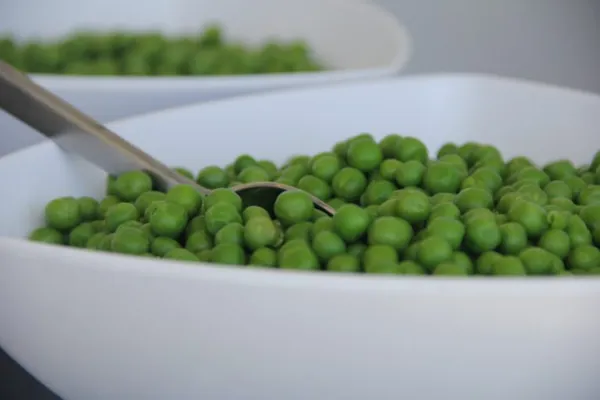
Whole Peas vs. Pea Protein Powder: Why Whole Foods Win in a Plant-Based Diet
Skip the Powder—Discover Why Getting Your Protein from Whole Peas is Better for Your Health and Your Plate
As more people embrace plant-based diets for health, environmental, or ethical reasons, the search for optimal protein sources has become a central focus. One popular solution is pea protein, especially in powdered form, hailed for its nutritional benefits. However, in the context of a whole food plant-based (WFPB) diet, there is growing debate about whether it’s better to get pea protein from its natural source—whole peas—rather than from processed powders. The core philosophy of a WFPB diet emphasizes the value of eating whole, unrefined foods in their most natural state, and this principle applies to protein sources as well.
Understanding the Whole Food Plant-Based Diet
A WFPB diet prioritizes eating plant-based foods in their whole form, meaning they are minimally processed or not processed at all. The focus is on nutrient-rich foods such as:
Fruits and Vegetables: Packed with fiber, vitamins, minerals, and antioxidants.
Whole Grains: Sources of complex carbohydrates, fiber, and protein.
Legumes: A staple for plant-based eaters, including beans, lentils, and peas, which offer protein and essential nutrients.
Nuts and Seeds: Nutrient-dense with healthy fats and protein.
This diet typically excludes refined or heavily processed foods, including protein isolates like pea protein powder, in favor of whole plant foods.
The Difference Between Whole Peas and Pea Protein Powder
Pea protein powder is derived from yellow split peas through a process of extracting and isolating the protein. While the powder is convenient and protein-dense, this extraction removes much of the fiber, vitamins, minerals, and beneficial plant compounds naturally found in whole peas. Here’s a breakdown of why whole peas may be the superior choice when following a WFPB diet:
Nutrient Density and Balance: Whole peas provide not just protein but also a rich array of nutrients, including dietary fiber, vitamins (like B-vitamins and vitamin C), and minerals such as iron, magnesium, and potassium. Pea protein powder, while high in protein, lacks the complete nutrient profile of whole peas.
Fiber for Digestive Health: One of the main benefits of whole peas is their high fiber content. Fiber aids digestion, supports gut health, and helps maintain steady blood sugar levels. In contrast, pea protein powder contains little to no fiber, stripping away one of the essential components that makes whole peas so beneficial.
Less Processing, More Health: Whole peas are a natural, unprocessed food. In contrast, pea protein powder undergoes significant processing to isolate the protein, which goes against the principles of a WFPB diet that promotes eating foods in their most natural state. Minimally processed foods tend to retain more of their original nutrients and plant compounds, which are beneficial for overall health.
Synergistic Effect of Whole Foods: Nutrients in whole foods work together synergistically, meaning they are more effective when consumed together than when isolated. In whole peas, protein works alongside fiber, antioxidants, and micronutrients to provide a more balanced and nutritious meal. Pea protein powder, while high in protein, doesn’t offer this same synergy.
Sustained Energy and Satiety: Whole foods like peas, which are rich in fiber and complex carbohydrates, offer more sustained energy and help you feel fuller for longer. Fiber slows down digestion, preventing spikes in blood sugar and keeping you satisfied between meals. Pea protein powder, lacking fiber and carbs, may not have the same satiating effect.
Environmental and Ethical Considerations: Growing peas as a whole food requires less processing and resources compared to manufacturing pea protein powder. While both are better for the environment than animal-based protein, eating whole peas aligns more closely with the sustainability ethos of a WFPB diet by reducing the energy and resources needed to process them into powder form.
Why Whole Peas Are a Better Protein Source
While pea protein powder can be convenient for those looking for a quick protein boost, it falls short in delivering the complete package that whole peas offer. Here’s why whole peas should be your go-to choice for protein on a WFPB diet:
Better Nutritional Profile: Whole peas provide not only protein but also essential vitamins, minerals, and fiber that support overall health.
Long-Term Health Benefits: The fiber and micronutrients found in whole peas contribute to heart health, improved digestion, and better blood sugar control. Protein powders, stripped of these elements, can’t offer the same health benefits.
Staying True to WFPB Principles: The WFPB diet is all about consuming foods in their most natural, whole form. Whole peas, rather than processed pea protein powder, align with this philosophy, offering a more balanced and nutrient-dense option.
How to Incorporate Whole Peas into a WFPB Diet
Incorporating whole peas into your meals is easy and delicious. Here are some ideas:
Salads and Grain Bowls: Add cooked peas to salads, grain bowls, or stir-fries for a protein and fiber boost.
Pea-Based Soups: Split pea soup is a hearty, filling meal that provides plenty of protein and fiber.
Hummus and Spreads: Use whole peas as the base for dips and spreads, combining them with herbs, spices, and tahini.
Curries and Stews: Peas are a great addition to curries and stews, adding texture and protein to your meal.
Pea Patties or Veggie Burgers: Make homemade patties with mashed peas, grains, and spices for a tasty plant-based burger option.
Conclusion
While pea protein powder may offer convenience, whole peas are a far more nutritious and holistic option for those adhering to a whole food plant-based diet. With their rich nutrient profile, fiber content, and minimal processing, whole peas provide a superior source of protein that aligns with the WFPB philosophy. By choosing whole foods over processed protein powders, you can enjoy not just better health outcomes but also a more balanced, sustainable, and satisfying approach to plant-based eating.

